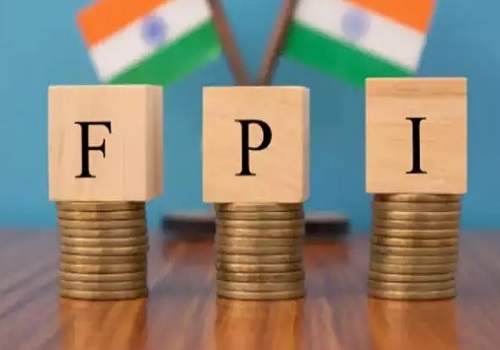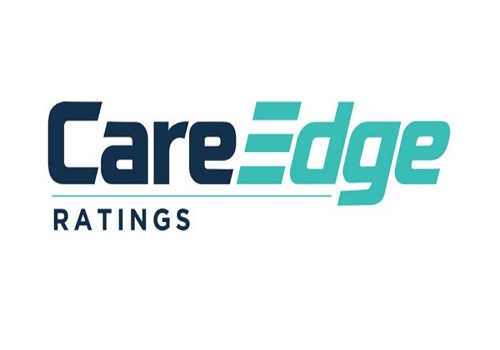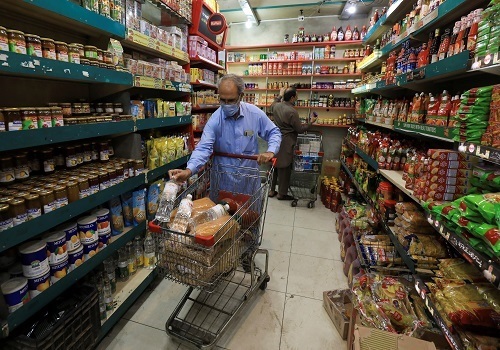Continued domestic flows help sustain stability in the market : Motilal Oswal Asset Management Company

According to Motilal Oswal Asset Management Company, continued domestic flows help sustain stability. MOAMC predicts that if FPIs continues to remains buyers, the positive momentum in the market is likely to increase.
India is seeing strong domestic flows. June saw over Rs41kcr of inflows into mutual funds. Last 3 months have seen Indian market perform relatively strongly. FPI flows into debt markets have also picked up. Positive FPI flows have helped in achieving record forex levels in the country. 10-year bond yield has declined to just below 7% now vs 7.2% in May.
MOAMC also notes that Chinese market has again started to show weakness. The strength in Chinese market during Feb to mid – May period had sucked up FPI liquidity from all over the world. India had also experienced outflows during the period. Now the Chinese market has started to show weakness. From the peak in May, it has dropped 10-15%. India has again started to get consistent FPI inflows. It was over USD3bn in June and has crossed that level by 3rd week of July.
Click here to see detailed report
This continues to be time for alpha
Q1 Result season is on. In this result season, growth rates of profits of India Inc is seen to drop. IT and banks, two spaces that make up close to 50% of the index weight are expected to deliver lower than index earnings growth. Earnings growth which seemed to be omnipresent a few quarters back would be at a premium. This makes us believe that the value trade may be getting over as after 4.5 years of strong performance, in the absence of growth, continuing the momentum should now become increasingly difficult.
As earnings growth gets limited to a smaller part of the market, we believe that this part would get a premium vs other in line with MOAMCs belief that market follows earnings growth. MOAMCs portfolios are built of high sustainable growth companies and are well placed.
Valuation and upside
Markets have done well over the past period. Valuations are clearly higher than long period averages in most parts of the market. However, with higher growth outlook, higher valuations should sustain. MOAMC had shown earlier that a 1% higher earnings growth for 10 years bumps up valuations by 5%.
India inc retains is positive outlook by and large. This being the case, MOAMC do expects only a time correction rather than any sharp drop in the market and expect investors to make use of any dips in the market.
Budget takeaways
The Indian union budget saw government’s big focus on fiscal consolidation as FY25 fiscal deficit was budgeted at 4.9% versus 5.1% in the interim budget in Feb 2024 and the plan to bring it down to 4.5% in FY26 was reiterated.
The covid years had seen a sharp spike in Fiscal deficit and the same is now being corrected. The actual numbers realised should be better because the tax to GDP is assumed @1 while the trend has been that of an improvement.
Contrary to expectations, there has been no change in subsidies, which as a percentage of GDP, continues to drop while in absolute terms they are preserved at last year’s levels. Capex spends continue to gain market share. Rural spending remains weak.
The large RBI dividend was partly used to fund support to Bihar (for new roads, power project and flood control) and AP (for new capital) and rest for fiscal consolidation.
As compared to the interim budget, no extra allocation has been seen in defense and other capex. This is a year of consolidation for this space after strong growth over the past 2 years. Quantum of capex done can still show momentum if more BoTs are done with much better corporate balance sheets. While overall capex numbers have not moved much vs the interim budget, provisions for PMAY, renewable energy and roads has been increased while PM Sichai has seen a cut. In defense, the biggest increase is seen in aircrafts.
Overall capex of Centre, states and CPSE is expected to remain at 6.1% of GDP implying growth rates in line with tax collections.
Tax buoyancy continues to be good. Q1 tax collections are above the assumptions taken for FY25. RBI’s dividend is reducing the stress on borrowings. Helped with sustained FPI inflows on debt side, we should see a downward pressure on bond yields.
A hike in both short term and long-term taxes on equity is a clear negative. However, now that the LTCG rates have been harmonised, the threat of an adverse change on this count is low in future. Since equities pay STT (nil in other classes), the lower STCG should also continue in the future. The higher taxation in India would reduce the attractiveness of India as an investment destination for FPI. The Gift city route to invest into MFs would become more attractive.
The removal of inflation indexation will impact investment attractiveness of premium real estate based on price compounding achieved. Ballpark, real estate price compounding of over 10% is beneficial for investors vs the older regime.
Urban consumption has been given a fillip by reducing income taxes.
With a clear focus on job generation, the government revealed a new employment subsidy, which should also aid low-end discretionary consumption.
The budget doesn’t change the direction for any sector. The changes are small. Cigarettes are celebrating on status quo being maintained. Jewellery should see better formalization on reduced import duties. PLI allocations have moved up to Rs.133bn and many spaces would wait in anticipation.
The change in capital gains tax structure increases the relative attractiveness of Mutual Fund platform for investors to participate in the markets for their equity investment. MOAMC expects equity inflows into MFs to strengthen going forward. Change in STT taxation does impact the arbitrage funds marginally but they would retain their competitiveness.
Overall, the outlook on the sectors has not changed post budget.
Q1FY25 result season
Q1 result season is on. 45 companies tracked by us have declared result as of 23rd July. Overall, the results have delivered a miss of 2% vs already muted expectations of a 2% decline in PAT. Ex OMCs PAT is up 6% vs expectations of 7%. In NIFTY, ex OMCs (13 cos), PAT is up 7% vs expectations of 8%. The miss is mostly on account of commodities. Earnings downgrades have been more than upgrades.
The period of high profit growth is behind us. MOAMC believes that going forward, the higher growth delivering companies would start to command a growth premium over others. It could also mean that the value part of the market, where growth quotient is low, could peak out.
Above views are of the author and not of the website kindly read disclaimer
























